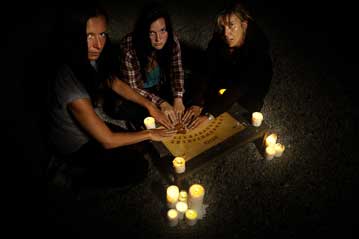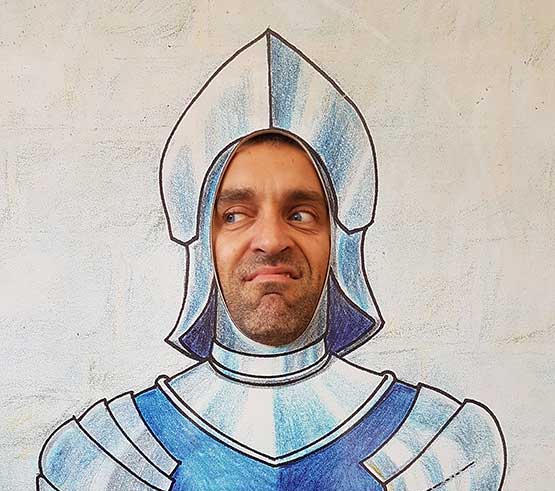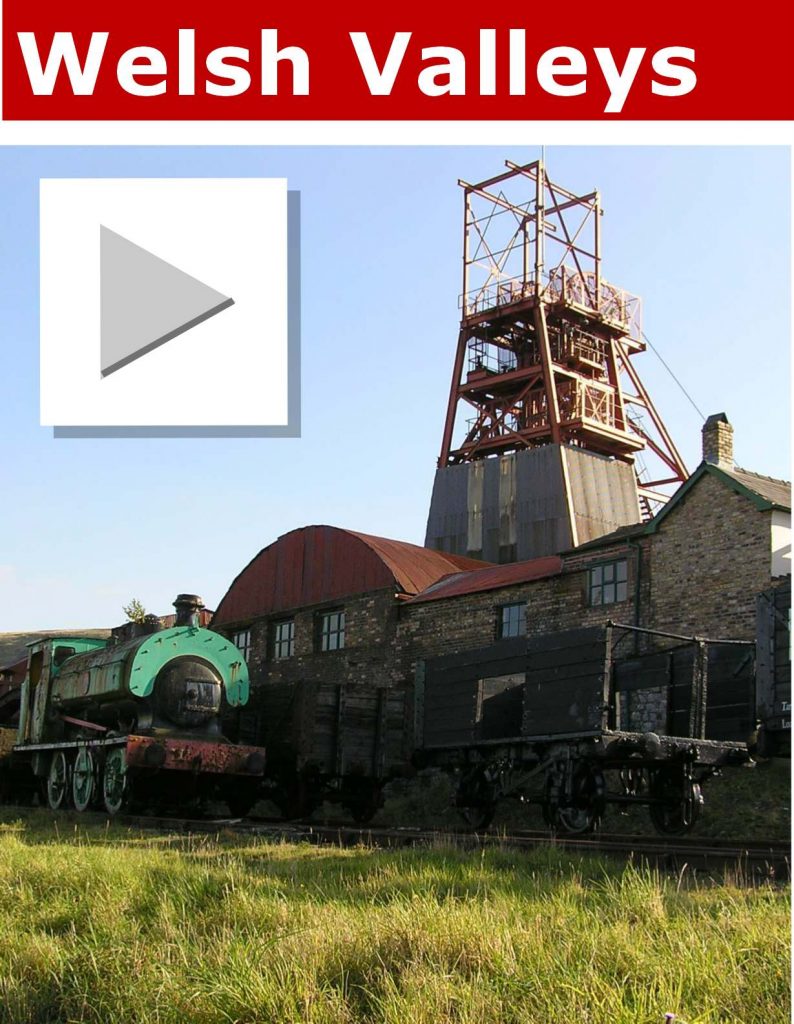THE GHOSTS AND LEGENDS
OF WALES
Wales offers a wonderful and eclectic variety of ghosts, phantoms, legends, myths and monsters. Its also offers a fantastic array of native heroes around whom storytellers have woven numerous stirring folk tales. It is a land where legends abound, where the aural tradition has ensured that the deeds of the past are never forgotten. Through centuries of political oppression, the Welsh imagination remained unvanquished, its roots buried so deeply in the Celtic past, that no invader could ever destroy them.
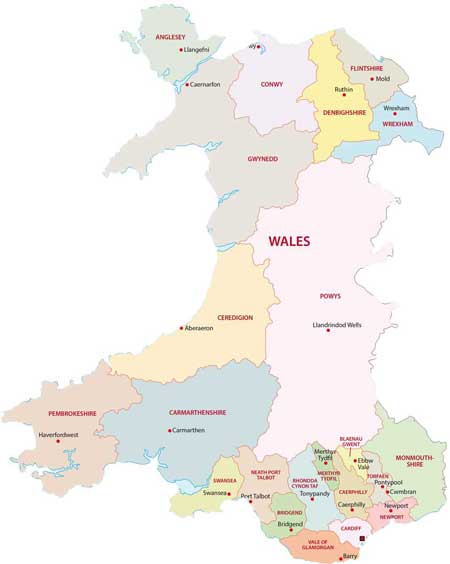
WHERE THE PAST HAS NEVER DIED
Wales has long been known as the “Land of Castles” and can well and truly boast some of the most impressive and imposing fortresses in the whole of Europe. Europe’s finest and most imposing medieval strongholds. Many of these imposing bastions remain as striking today as ever they did in the past, and the spectres that haunt them stands as testimony both to the violence of the age in which they were constructed and to the hundreds of years and unrest that the castles of haunted Wales of borne witness.
The haunted houses of Wales present a diverse and intriguing contrast. Some are almost lost amidst lush grounds and stand hidden away from the prying eyes of all but the most intrepid ghost hunter. Others are well known tourist haunts and yet their ghost stories are only ever whispered in hushed tones for fear of offending or even raising the spirits.
The Welsh landscape, with its soaring mountain wildernesses, lush green valleys, or sea-swept cliff tops, also makes a suitable backcloth for tales of feckless lovers, family curses and wandering spectres to unfold against.
So Wales is a land of history and mystery and to find yourself standing alone in a haunted house, castle, or even mountainside on a windswept winter’s day is to feel centuries removed from the pressures of the modern age.
Here, in a quiet moment, you can attune yourself to the memories that surround you and experience the true thrill of exploring haunted Wales in a land where the past has never really died.
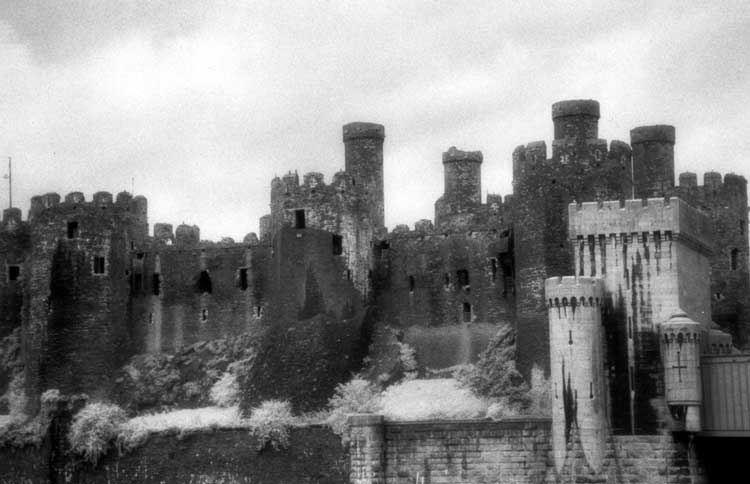
WELSH HAUNTINGS
The Skirrid Mountain Inn, Llanfihangel
The oldest known reference to this delightful hostelry, which nestles within the shadow of the Skirrid Mountain, is in 1110 when John Crowther was sentenced to death for sheep stealing and was hanged from a beam of the inn.
Over the next eight hundred years 182 felons would meet a similar fate, dangling by the neck over the buildings stairwell.
An unusual style of customer relations you may think, until you realise that, as well as serving up frothing tankards to thirsty travellers, the premises also doubled as a courthouse. Until, in the mid 19th century, it pulled out of the execution business altogether and has since dedicated itself to the sustenance of the living.
Needless to say, with such a sinister pedigree, The Skirrid Mountain Inn can offer many a ghostly tale to chill the blood.
The spirits of those executed here, often make their presences known in a rather direct and disturbing manner.
Several people have felt the overwhelming sensation, of an invisible noose being slipped around their necks and have been alarmed to feel it tightening. Although, they always manage to break free from the malign grip, they bear the distinct impression of the marks of the rope for several days afterwards.
Another ghost to haunt the old and, in parts, spooky property is that of woman who, although never seen, is both felt and heard by staff as she rustles invisibly past them, her progress marked by a distinct chill in the air.
In the 1990’s, during a live radio broadcast from the inn, a medium was asked for his impressions. He said that he sensed a young woman who had died of consumption, possibly in her early thirties.
Realising that she had no way of proving or disproving the statement, the landlady thanked him politely for the information.
Several months later, however, a couple researching their family tree paid the landlady a visit. They told her that they were seeking information on one of their ancestors, Harry Price, who had owned the premises during the mid 18th century. They then revealed that his wife, Fanny Price, had died of consumption in her early thirties, and was buried in the local churchyard, where she still lies today!
Miskin Manor Hotel
Miskin. Nr Cardiff
Despite its proximity to the M4 which is but a stone’s throw away, the lovely and atmospheric Miskin Manor Hotel is a world removed from the hustle and bustle of the 20th century.
The manor itself has enjoyed an eventful and chequered history that dates back to the 10th century, although the current house came into being in 1857 when the estate was purchased by David Williams, a well known Welsh Bard and philanthropist.
The house has survived two major fires, one in 1922 which destroyed all but the external walls and a similarly devastating conflagration in 1952, shortly after its conversion from wartime hospital to flats.
Restored, it remained as flats until 1985 when it was transformed into a luxury hotel, in which capacity under the ownership of the Rosenberg family, it still operates today.
Lost amidst a tranquil profusion of stunning greenery, the Miskin Manor is blessed with a timeless ambience which makes it a delightful rural retreat in which to while away a peaceful and relaxing few days, as in the case of its guests, or for the whole of eternity, as in the case of its ghosts.
The most active ghost to roam the interior of Miskin Manor is that of a ghostly lady who appears regularly in the bar area. She is a harmless revenant who can be counted on to put in an appearance most nights between midnight and 1am. The hotel porter has long grown used to her appearances interrupting the well earned cup of tea he sits down to enjoy in the bar at around 1.40am. He simply watches as her hazy figure drifts from the drawing room over to the bar opposite and slowly disappears into thin area.
Ben Rosenberg believes that she was a former resident of the house who is simply following a regular path that she once walked in life. “There used to be a staircase where the bar stands today,” he told me, “so she is evidently coming from the drawing room and going up the stairs just as she did when she lived here.”
Psychic medium Norie Miles brought a team of researchers to the hotel in June 2004 to see if they could uncover any clues as to the identity of the mysterious figure.
Although nothing actually appeared to those present, everyone noticed a sudden change in atmosphere at the time when the mysterious visitation is known to occur. An hour or so later she and Ben Rosenberg were walking along a back corridor when they happened to comment on the lack of activity that night.
No sooner had they done so, than a heavy picture was lifted off the wall and thrown onto the floor in front of them as if one of the ghostly residents was desperate to make the point that, just because they couldn’t be seen it didn’t mean that they weren’t about!
Llancaiach Fawr Manor
Gelligaer Road, Nelson, Treharris
Admittedly the name of this historic manor house doesn’t exactly trip off the tongue, but on virtually every other count it is truly an impressive place.
To visit it is not so much to be transported back in time as to find yourself pitched into a time-warp where the calendar has frozen in 1645. This was the year when the house’s owner, Colonel Edward Pritchard, switched his allegiance from the Royalist to the Parliamentarian cause; and this is the year that visitors step in to when they stray over the threshold of the solid grey building that was erected in 1530 on the site of an earlier medieval house. ‘Servants’ in period costume greet and escort you around their ‘master’s’ house, and chat amiably away about the events and gossip of 1645, doing so in their interpretation of the language of the day.
By contrast, when the dark winter nights drape themselves across the time-scarred walls, and the wild winds murmur around the windows and doors, the house echoes to the steady tramp of nervous footsteps as bands of visitors set off by candlelight to seek the ghosts that wander what is widely acknowledged as the most haunted house in South Wales.
“Llancaiach Fawr Manor is one of the spookiest and most atmospheric places I’ve ever been to,” Paranormal Investigator Phil Wyman told me, “and when the lights go out and it’s pitch black, there is an overwhelming sense of desolation.”
The grand staircase, situated to the left as you enter is haunted by two spectral children who sometimes appear and then disappear, but who are mostly heard rather than seen as they enjoy a ghostly game, their phantom whoops and giggles clearly audible to bemused witnesses.
Several ghostly children are apparently loose inside the house and seem to delight in playing childish pranks on staff and visitors alike. The costumed female guides have long grown used to their aprons falling to the ground at the most inopportune moments when their bows have been untied by invisible impish hands.
A steward who was once descending the house’s green spiral staircase placed his hand on the railing and suddenly jumped back in surprise when he felt a cold childish hand beneath his!
The manor’s kitchen is haunted by a lady in a white blouse who appears to be baking bread and who is generally held to be the ghost of Mattie, a former housekeeper who died under tragic circumstances, although nobody knows exactly what those circumstances were. Her bedroom, situated on the upper floor, is acknowledged to be the building’s most haunted room. A feeling of crushing sadness seems to hang in the air and many visitors – tough Australian Rugby players and case-hardened senior police officers included – have been overcome by emotion on entering her room and have been forced to leave with tears streaming down their faces.
Sensibly the house’s custodians and guides have chosen not to attempt to come up with a story to explain away this strange phenomenon, but are content to let the rooms melancholic feel speak for itself and will only add by way of explanation that whatever the fate that befell Mattie, it must have been “something awful.”
The most bizarre of the regular inexplicable occurrence are the disembodied voices that always seem to be chatting one room ahead of people. They are very distinct, but when those who hear them actually enter the room, they appear to have moved in to the next room or even gone upstairs where their chatter is still clearly perceptible.
On one occasion a film crew spent an entire day filming inside the house for what was apparently going to be a long television piece, and naturally the staff were excited at the prospect of such exposure. But when the programme was aired they were puzzled by the shortness of the segment. They duly contacted the television company and were told that much of the film’s soundtrack had been spoilt by ‘foreign’ voices talking very loudly and drowning out the presenters and interviewees. No-one at the time of filming had heard these voices and the reference to ‘foreign’ was probably the London Production company’s interpretation of the native Welsh tongue that the mysteriously vociferous intruders appeared to be speaking in!
A man in what has been described as Tudor/Stuart costume who has been seen sitting on a window ledge in the Great Hall is thought to be the ghost of Colonel Pritchard, and it is presumed that his are the ghostly footsteps sometimes heard pacing back and forth across the room’s dais.
During the house’s refurbishment in the 1980‘s, the ceiling in the kitchen directly beneath the Great Hall was plastered using traditional methods and materials. No sooner had the task been completed than a portion of the plaster came loose and fell down. The section was re-plastered but again it came away. Indeed, it fell down several more times before experts were called in to investigate. They concluded that their was no fault in the workmanship, nor in the quality of the materials being used. In fact the only possible explanation they could think of was that vibrations from the Great Hall above must be responsible. Interestingly it was just one portion of the ceiling that was affected and that section was the one directly beneath the dais where the ghostly footsteps were known to walk.
Reports of ghostly activity at Llancaiach Fawr Manor continue to come in from staff and visitors alike and it is without doubt one of Britain’s most supernaturally active buildings.
But, although the ghosts might sometimes prove annoying they are not in the least bit malevolent and those who work here seldom find them frightening. Indeed, aside from a ghostly voice that once screamed ‘Out, Out’ to an astonished visitor, the overall spirit of the place is convivial and few people fail to fall beneath its spell.
Perhaps the final word should go to custodian Marianne Anderson who perfectly summed up the manor’s ambience when she told me, “as you walk into the house you can feel the energy buzzing through the soles of your feet.”
Newton House
Dinefwr Park, Llandeilo, Llandeilo, Carmarthenshire
Newton House huddles at the heart of a glorious sylvan landscape, the story of which stretches back through over one thousand years of Welsh history.
Originally it was the site of the Rhys family’s castle, the ruins of which still loom large over Dinefwr Park.
They were descendents of the ancient Princes of Wales and in the early sixteenth century they Anglicised their name to Rice as the Welsh Aristocracy was absorbed into the English with the coming of the Tudors under Henry V11.
The house as it stands today was built in the 1660’s by Edward Rice, although its present façade was added in Victorian times.
It is a strange looking house of solid grey stone, its corners crowned by four tall towers each capped by a sloping slate roof, and as you approach it you just know that the place must have a ghost story or two to tell.
It is haunted by a ‘White Lady,’ who is thought to be the wronged wraith of Elinir Cavendish, first cousin of the Lady of the house in the 1720’s – although some versions of the story say she was her sister.
Tradition maintains that she was being forced to marry a man that she didn’t love, and in order to escape his clutches she sought sanctuary with her family in Dinefwr Park.
Incensed by the rejection, her spurned suitor gave chase and, having caught up with her at Newton House, murdered her in cold blood.
Her ghost has walked the building ever since and appears to have been particularly active in the 1980’s, when the premises were occupied by a television facilities company.
There was much talk of the house possessing a very strange atmosphere and during their tenure a number of television editors fell ill one after the other, which may have been completely co-incidental, but all the same gives pause for thought.
Later on a director and an editor were both working in an edit suite when suddenly a young and very beautiful girl appeared, seemingly out of nowhere, and proceeded to glide across the room before vanishing into a cupboard. They searched the area where she had disappeared but there was no sign of their mysterious visitor and they were left to contemplate the fact that they had been honoured by a visit from the spectral white Lady of Newton House.
Maes-y-Neuadd
Talsarnau, Gwynedd
Maes-y-Neuadd is a sturdy manor of solid Welsh granite and slate, that dates back to the 14th century, although the 16th, 18th and 20th centuries have all left their mark on its ancient fabric.
Its name literally means ‘mansion in the meadow’ and the house certainly occupies a tranquil location, perched on a wooded hillside, high above the waters of Tremadog Bay and affording stunning views across the Snowdonia National Park.
It now operates as a lovely country house hotel and boasts one haunted bedroom, the Morfa suite, in which guests can look forwarded to the enchanting possibility of being lulled into their slumbers by a female phantom of goodly intentions.
She is thought to be the ghost of a former children’s nursemaid, and her attire of long gown and mobcap, certainly suggests that she was of the serving rather than the owning classes.
Nobody who has seen her has found her to be in the least bit frightening or troublesome, indeed witnesses say that she has a very calming presence and emits an aura that helps them drift into a deep and restful sleep.
Castell Coch
Built in 1870 for the wealthiest man in the world, The Marquis of Bute, and designed by architect William Burgess, Castell Coch with its pseudo medievalism possesses a lofty exterior and an absolutely stunning interior.
Its foundations, however, date back more than seven hundred years, and have born witness to several tragic events that have resulted in the haunting of the present Victorian Castle. It is also haunted by the ghost of a lady who, following the death of her son in the nearby woods pined away and died of a broken heart.
Following the death of the Marquis of Bute, Lady Bute continued to live in the castle but was, it is rumoured, driven out by the constant appearances of the ghostly white lady.
Roch Castle
Nr. Haverfordwest, Pembrokeshire
In the early 1300’s a witch prophesised that Adam de Rupe would die from the venomous bite of a serpent or adder unless he was able to avoid their fatal sting for a period of one year. Should he do so, he had nothing more to fear and would go on to live a long and happy life.
Determined to survive, he built Roch castle atop an isolated, rocky outcrop and, having moved in to it highest storey, prepared to stay put for the next twelve months.
As mundane as his day- to-day existence was, he was consoled by the fact that no slithering agent of death would be able to get anywhere near him.
Finally, the day of his release drew near.
But then a particularly harsh spell of wintry weather settled upon the land and its icy winds turned his flesh blue and set his teeth chattering. He therefore ordered his manservant to fetch him some wood in order that a roaring fire might warm the last days of his confinement.
But a snake had concealed itself amongst the logs and, as Adam de Rupe began stoking his fire, the creature suddenly sank its teeth into him and fulfilled the prophecy.
Following such auspicious beginnings, the castle’s history was relatively uneventful.
The de Rupe family died out in 1420 and their stronghold passed through several owners until coming into the possession of the Walters family in the mid-17th century.
During the Civil War the castle was garrisoned by the Royalists, and saw much action in 1644 when it was captured by the Parliamentarians, re-taken by the Royalists, before falling once more to Cromwell’s forces.
Lucy Walters, who was born at Roch Castle in 1630, demonstrated her Royalist sympathies by becoming the mistress of Charles 11.
She bore him a son, James, whom Charles made Duke of Monmouth and who would grow up to become the ill-fated leader of the 1685 Monmouth rebellion and end his days on the headsman’s block.
Perhaps it is the fate of her son that brings Lucy Walters back to Roch Castle where, garbed in a white dress, passes effortlessly through locked doors.
Aberglasney House and Gardens
Llangathen, Carmarthanshire
One day in the 1630’s, a housekeeper saw five disembodied candles, floating around the house’s newly plastered “blue room.”
The next morning, five maidservants were found dead in their beds there. A charcoal stove, left burning to speed the drying of the plaster, had asphyxiated them as they slept.
Over the following centuries, the “corpse candles” became one of Aberglasney’s most abiding legends.
Their fearsome flicker became renowned as a dreadful omen of approaching death, and one could be forgiven for thinking that the tragedy of the five maids had brought about a curse that has blighted the house ever since.
It was Anthony Rudd, Bishop of St David’s, who built Aberglasney House in the 17th century. He intended it to be a family home for successive generations but, within a hundred years, mounting debts forced his descendents to put the estate on the market.
Succeeding purchasers found that their family fortunes seldom fared better as, within two or three generations, they too would find themselves selling up.
As far as the house and grounds were concerned, however, the renovations and extensions, carried out by various owners, greatly enhanced the property. The Dyer family, owners between 1710 and 1798, added the magnificent Queen Anne façade.
A later owner, John Walters-Phillips, graced this with an aggrandized portico.
The beautiful gardens were justly famous, and the row of yew trees, planted in the Middle Ages and which were later bent over to form an extended arch, is still wondered at today, just as it was by visitors, throughout the 19th century.
At least one owner from this period haunts the house. In 1803 Thomas Phillips, a wealthy surgeon with the East India Company, purchased Aberglasney. Following his death in 1824, his amiable phantom was soon seen flitting about the house and grounds.
Over the years he has appeared to gardeners, servants and tradesmen, whilst more recently, guides at the property have heard his ghostly footsteps.
Following Thomas Phillips death, successive owners found their lives blighted by ill luck. Children would die in infancy. Couples with dynastic ambitions would remain childless. Old and young alike would die suddenly or find their fortunes, both monetary and spiritual, brought to the brink of ruin.
An aura of melancholic decay descended upon the property and, by the end of the 1960’s, it had been abandoned. Weed and nettle crept over the magnificent gardens, whilst damp and rot chewed through the fabric of the house. Whatever nature left untouched, vandals were quick to destroy, and by the 1990’s the place lay forgotten and derelict.
And then a miracle happened.
A small band of enthusiasts had kept a concerned eye on Aberglasney’s decline. They formed a trust and, thanks to a wealthy American benefactor, were able to purchase the property. They rescued the gardens and halted the decay.
But the spirits of the past were also awakened. The builders, who set to work on the hollow shell of the old house, often saw the wraith of a young girl standing in a corner of the basement, apparently cooking.
Guides, absorbing the atmosphere of the peaceful cloisters, would often be disturbed by the sound of footsteps behind them, only to find themselves quite alone when they turned round.
It is, however, in Pigeon House Wood at the rear of the property, that the most disturbing phenomenon is experienced.
There is a certain spot, where many visitors sense a feeling of dreadful unease. It intensifies as they descend the earthen path until, at the edge of the wood, it is replaced by sudden fear, followed by an eerie coldness.
A medium, visiting the property in 1999, said that she sensed someone trying to evade capture in the wood. Where people begin to feel uneasy, she explained, was where his pursuers had spotted the fugitive. He made a desperate run for freedom, but was felled by a single bullet, at the spot where the sudden fear and coldness is most often felt.
Aberglasney is a gem, nestling amidst some of the most stunning scenery imaginable. The sad aura that still hangs heavy over the house, is a sharp contrast to the sheer beauty of its gardens. It is a tranquil place, that has resigned itself to a ripe old age and its sobriquet “a garden lost in time” is both deserved and accurate.
Dylan Thomas’s Boathouse
Home to Dylan Thomas for the last four years of his life this “sea-shaken house on a breakneck of rocks” is imbued with his literary, if not literal, spirit.
In the tiny blue painted work shed that perches precariously at the very edge of the cliff, he wrote what is perhaps his best known poem Do Not Go Gentle into that Goodnight.
He died in November 1953 while on a lecture tour of America, his body being brought back to Laugharne and buried beneath a simple white cross in the nearby cemetery.
With his widow Caitlin unwilling to live in the boathouse his mother, Florence, became the tenant, staying until she died here in 1958.
It is her ghost that is believed to haunt the house which is now a shrine to the memory of her famous son.
Staff have often been surprised when opening the premises at the beginning of the day to hear the sound of a chair scraping over the floor upstairs, as though someone has quickly risen from a table to avoid them.
On entering the boathouse they will find that lights that were definitely switched off the previous evening have mysteriously been turned on over night, while books have been knocked off the shelves and, on occasions, pictures have been lifted off the walls and placed on the opposite side of the upstairs room.
Devil’s Bridge
The picturesque setting of this landmark amidst rolling wild mountain scenery cannot be bettered.
The steep stone steps that descend into a deep ravine where foaming white waters roar through the gorge, where trees cling to the sheer moss covered rock face.
Looking up from the cool shade of the gorge three picturesque bridges span three hundred or so feet above the twisting foaming waters of the river.
A twisting path descends into the caverns of this breathtaking gorge.
In this magical mysterious ravine you can gaze up at the three picturesque bridges that cross the ravine and it doesn’t take a great leap of the imagination to picture the devil’s work at this awe inspiring spot for the building of the first bridge is attributed in legend to Old Nick himself.
Long before any bridge spanned this spot an old woman lost her cow and went out to search for the roving beast. Her heart sank when she saw it on the other side of the river.
But suddenly the devil appeared on the scene and offered to build her a bridge on condition that he could claim the body and soul of the first to cross over it.
The woman agreed and the devil set to work.
Once the bridge was completed the devil waited for the woman to cross his bridge to retrieve her cow and forfeit her soul. But she proved a more than worthy adversary and threw a crust of bread over the bridge, whereupon her dog chased after it to retrieve the morsel, the devil had his person and she was safe to follow to retrieve her bovine trophy.
Castell ‘Y’ Bere
Its stunning location surrounded by moody grey mountains on a lonely road, a rocky path twists alongside a precarious pathway that brings you to the rocky spur on which the rugged ruins of the castle stand dappled in strange twisting.
The castle was begin in 1221 and over the years ownership switched between the welsh princes and the English adversaries before apparently being abandoned in around 1294.
Some nights as the sun sets over the surrounding hills people have spoken of a solitary figure that stands motionless on the ruined ramparts of this once mighty fortress.
As though watching and waiting for some long forgotten reason until the last rays of daylight sink behind the mountains he slowly melts away as the night descends across this lonely countryside.
Powis Castle
Powys, Welshpool
In 1780 an elderly spinster arrived at the soaring red sandstone walls of Powis Castle, where she hoped to earn a little money spinning hemp and flax for the household. The Earl and his family were away in London, but the steward and small detachment of servants seemed more than happy to give the old lady employment, and even offered her a free nights accommodation.
What the poor woman didn’t realise was that they intended to enjoy a little spooky sport at her expense, by putting her in a bedroom that was known to be haunted.
As the door closed behind them, she was a little perturbed to hear it being locked from the outside.
But any fears she may have had, were soon dispelled by the sheer opulence of the room and, reasoning that they probably hadn’t wanted a stranger wandering the castle at night, the woman sat by the fire, and began reading her bible.
Moments later she heard the door open and, turning round, saw a man in a gold-laced suit enter the room and cross to the window, where he proceeded to gaze out into the night.
A little time later he turned and, without uttering a word, left the room.
Something about her mysterious visitor convinced the woman that he was not of this world and, kneeling down, she begged God to protect her.
Suddenly, the door opened again and the stranger drifted silently back into the room. This time, emboldened by her prayers, the spinster confronted the phantom, “who are you and what do you want?” she demanded. The man motioned her to pick up a candle and follow him. He led her to a small room and, stooping down, lifted one of the floorboards to reveal a locked casket underneath. He then showed her a crevice in the wall where its key was concealed. “Both must be taken out and sent to the Earl in London,” he informed her. “Do this and I will trouble the house no more.” With that, he turned and walked from the room.
The old woman, who given the prank that the servants had evidently played on her could be forgiven for wishing them to be as troubled as possible, appears to have been willing to let bygones be bygones. Rousing the servants, she told them what had happened.
A quick search soon revealed the hidden key and casket, both of which were despatched to their master in London.
Although he never revealed the contents, the Earl was so delighted that he provided for the woman from that day forth she never again wanted for any creature comfort or treat.
The ghosts mission was evidently accomplished, for he has never since returned to the castle which, despite possessing a veritable labyrinth of creepy, dark corridors and tapestry hung rooms, is more than content to let board- lifting phantoms remain firmly in its past.
The Haunted Regions
- The South West
- The South East
- The Eastern Counties
- The Midlands
- The North West
- The North East
- Haunted Wales
- Haunted Ireland
Haunted Houses
Wraiths In Residence
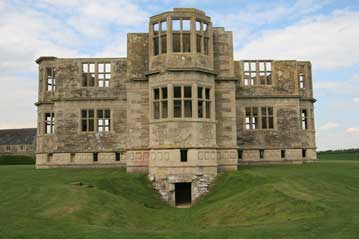
Haunted Castles
Revenants On The Ramparts
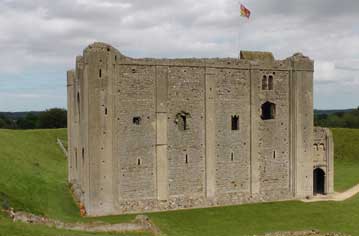
Haunted Hotels
Enjoy A Decent Night’s Unrest
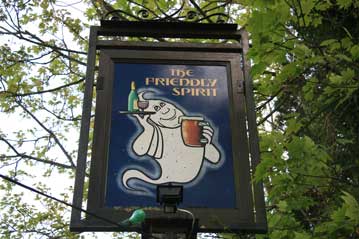
Ghost Tours
Walk With The Dead
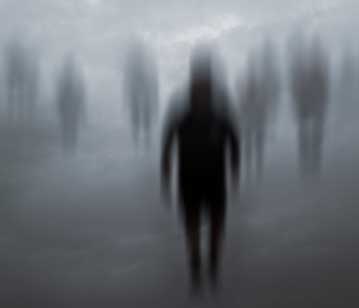
Ghost Hunts
Dare Your Search For The Spirits?
